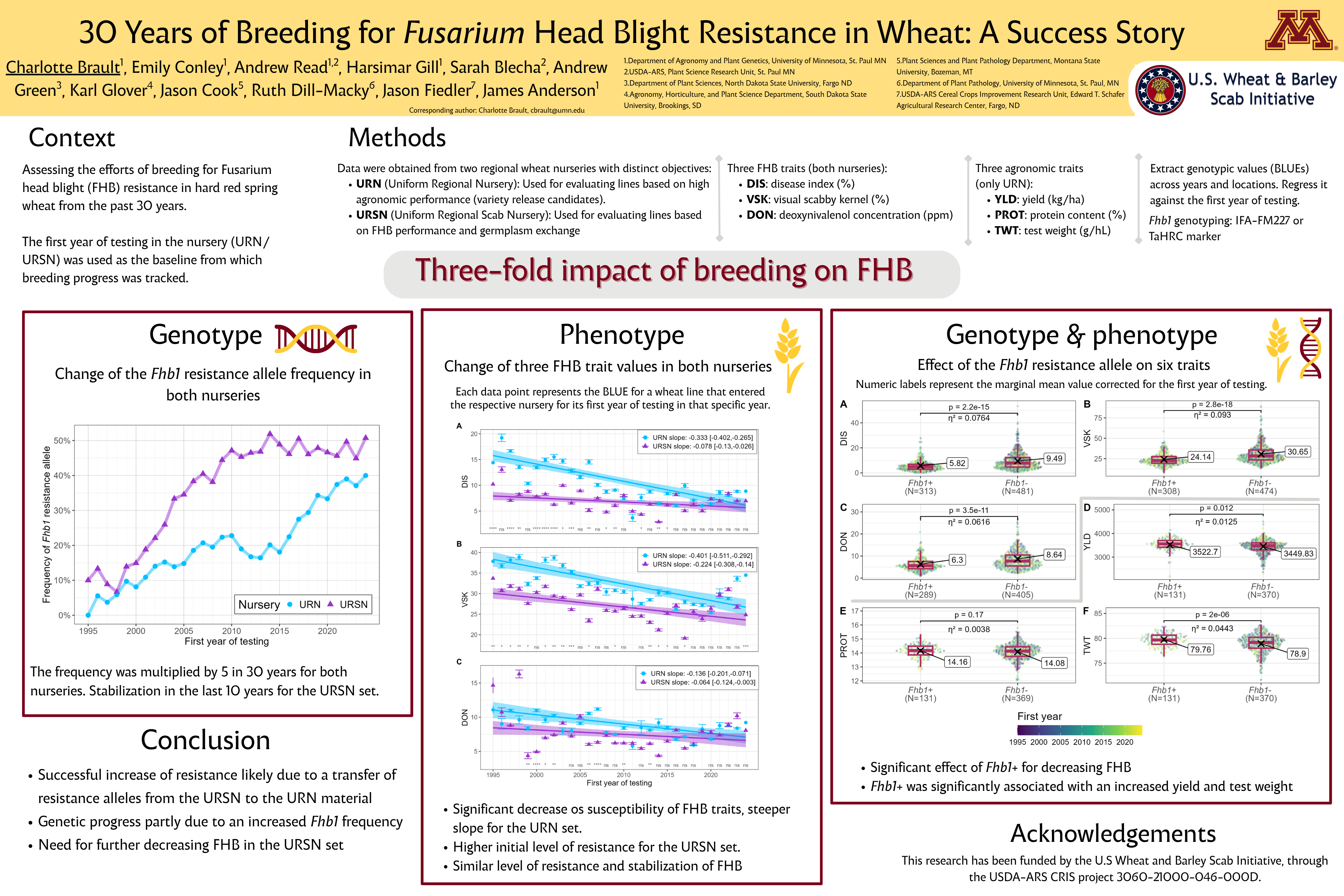Authors: Charlotte Brault 1, Emily J. Conley 1, Andrew C. Read 1,2, Harsimardeep S. Gill 1, Sarah Blecha 2, Andrew J. Green 3, Karl D. Glover 4, Jason P. Cook 5, Ruth Dill-Macky 6, Jason Fiedler 7, James Anderson 1
1. Department of Agronomy and Plant Genetics, University of Minnesota, St. Paul, MN 55108, USA
2. USDA-ARS, Plant Science Research Unit, St. Paul, MN 55108, USA
3. Department of Plant Sciences, North Dakota State University, Fargo, ND 58102, USA
4. Agronomy, Horticulture, and Plant Science Department, South Dakota State University, Brookings, SD 57007, USA
5. Plant Sciences and Plant Pathology Department, Montana State University, Bozeman, MT 59717, USA
6. Department of Plant Pathology, University of Minnesota, St. Paul, MN 55108, USA.
7. USDA-ARS Cereal Crops Improvement Research Unit, Edward T. Schafer Agricultural Research Center, Fargo, ND 58102, USA
Corresponding Author: Charlotte Brault, cbrault@umn.edu
Presenting Author: Charlotte Brault
Abstract
There has been considerable work on increasing the genetic
resistance to Fusarium head blight (FHB) in hard red spring wheat. Harnessing
the phenotypic data from uniform regional nurseries, the genetic gain over the
last 30 years was assessed for three FHB-related traits, namely disease index,
visual scabby kernels, and deoxynivalenol concentration. Specifically, two
nurseries were compared: the uniform regional nursery (URN), used to test
variety release candidates with good agronomic qualities, and the uniform
regional scab nursery (URSN), used to facilitate the phenotyping of FHB
resistance and to exchange germplasm among the cooperating breeding programs.
The objective of the study was three-fold: (i) studying the frequency of the major
FHB-related quantitative trait locus (QTL) Fhb1, (ii) assessing the
genetic gain for three FHB traits, and (iii) estimating the effect of this QTL
on FHB and agronomic traits. Within these objectives, a comparison was made
between the two nurseries. We showed that FHB resistance has increased
significantly over the years for FHB-related traits, with a higher rate for the
initially more susceptible URN materials. More recently, there has been little
difference in the susceptibility level between the two nurseries. The frequency
of the Fhb1 resistance allele has dramatically increased in frequency
over the years, from 0% in 1995 to 40% in 2024 for the URN nursery. We observed
a higher frequency of the resistance allele in the URSN compared to the URN nursery,
but the differences tended to diminish over time. The Fhb1 resistance
allele was significantly associated with increased FHB resistance for the three
traits, with up to a 39% decrease for the disease index trait. We tested the
effect of Fhb1 on agronomic traits using phenotypic data from the URN
dataset and found that there was no detrimental association between the
presence of resistance alleles and important agronomic traits. This work
underscores progress achieved through breeding, likely due to a successful
transfer of resistance alleles from the URSN to the URN material.

